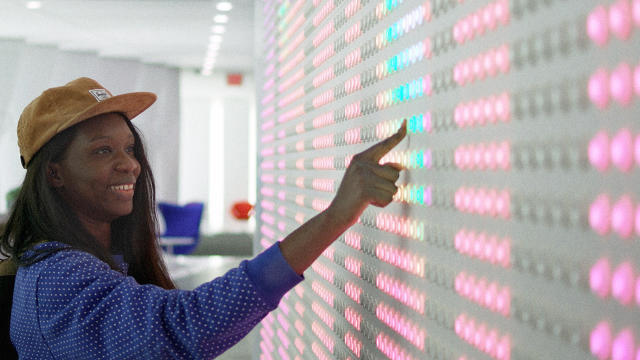Our displays feel magical, but in its simplest form a display is only an array of switches, flicking between states. Those switches can be anything: whether pixels of light or the cards on an old-time railway flip board. The biggest distinction between them from a practical perspective isn't that one is digital and the other is analog. It's that one is easy to program, and the other isn't.
To make programming any array of physical switches as easy as displaying something on a web page, Google is releasing a new open-source software and hardware library, called AnyPixel.js. It's a tool anyone can use to combine any number of individual "pixels" into a larger display, which can then be controlled by a web page.
Wanting to come up with an eye-catching example of what AnyPixel.js can be used for, Google decided to use the new software to create a display for the lobby of its NYC office. It purchased about 6,000 light-up arcade buttons and wired them all together, using AnyPixel.js as a controller. Since each arcade button has a color-changing LED inside it, each "pixel" is capable of displaying any color, but because they're also buttons, the finished display works like a touch screen—allowing you to tap on any pixel to interact with it.

Sure, the finished display is decidedly low-res (with only 5,880 pixels, Google's arcade button display has less fidelity than your Apple Watch's screen). But it's big and messy and mesmerizing and fun. It recaptures a little bit of the analog charm that more primitive displays (like flipboards) evoke, while giving them 21st-century digital oomph.
Time will tell what the community will do with AnyPixel.js, but there's all sorts of possibilities. Imagine all the lights in an office building coming together to work as a display at night, or a million Android smartphones coming together to make a single interactive display as big as a football field. Hackers should have a lot of fun with this.
All Images: courtesy Google